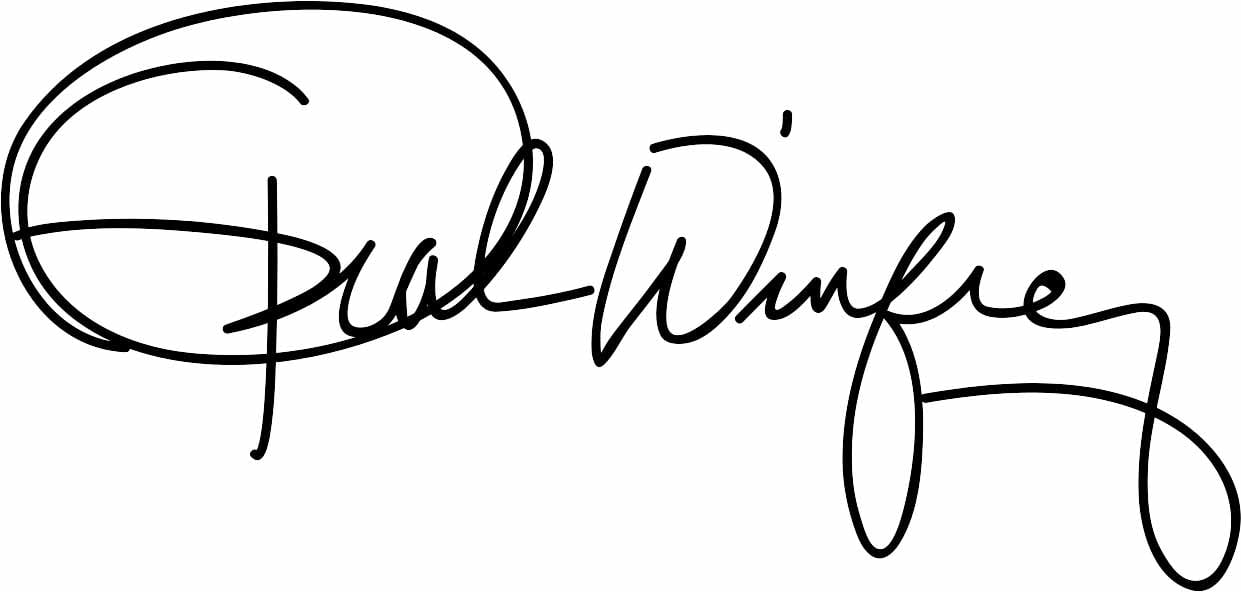When exploring the fascinating world of Hanfu, Ming Dynasty costumes are undoubtedly an intriguing chapter. With their unique elegance, profound cultural heritage, and exquisite craftsmanship, Ming Dynasty costumes show China’s long history. At Tangpura, we are keen to explore all aspects of these traditional costumes. In this blog post, we will take you to explore the charm of Ming Dynasty Hanfu in depth, revealing its style, cultural connotations, and modern influence.
The Diverse Styles of Ming Dynasty Hanfu
Men’s Apparel
1. The Dao Pao
The Dao Pao was a staple in the wardrobes of Ming-dynasty men. Characterized by its loose-fitting design, it featured a crossed-collar front that exuded a sense of casual elegance.
The two side slits not only added to its aesthetic appeal but also provided ease of movement. It was a garment suitable for daily wear, whether for a stroll in the marketplace or a gathering with friends. Men would often pair the Dao Pao with a simple belt, which not only accentuated the waist but also added a touch of refinement. This style showcases one of the distinct Styles and characteristics of the Ming dynasty Hanfu for men.

2. The Zhi Shen
For more formal occasions, the Zhi Shen was the go-to choice. One of its most distinctive features was the central seam running down the back, giving it a sense of symmetry and formality. The Zhi Shen was usually made from higher-quality fabrics, often with subtle patterns woven into the material.
It was commonly worn by scholars, officials, and those of higher social standing during important ceremonies, official functions, or family gatherings. This garment was a symbol of status and propriety, representing the wearer’s respect for the occasion and their position in society, highlighting the cultural connotations within Ming-dynasty Hanfu.
3. The Lan Shan
The Lan Shan was a favorite among the literati. It retained traditional elements while incorporating unique Ming – dynasty – specific adornments. The edges of the Lan Shan were often trimmed with contrasting fabrics or embroidered with delicate patterns, adding a touch of sophistication.
It was not just a piece of clothing but a statement of one’s cultural and intellectual pursuits. Wearing a Lan Shan was a way for scholars to showcase their erudition and adherence to the Confucian values of refinement and propriety, further demonstrating the unique Styles and characteristics of Ming-dynasty Hanfu for the educated class.
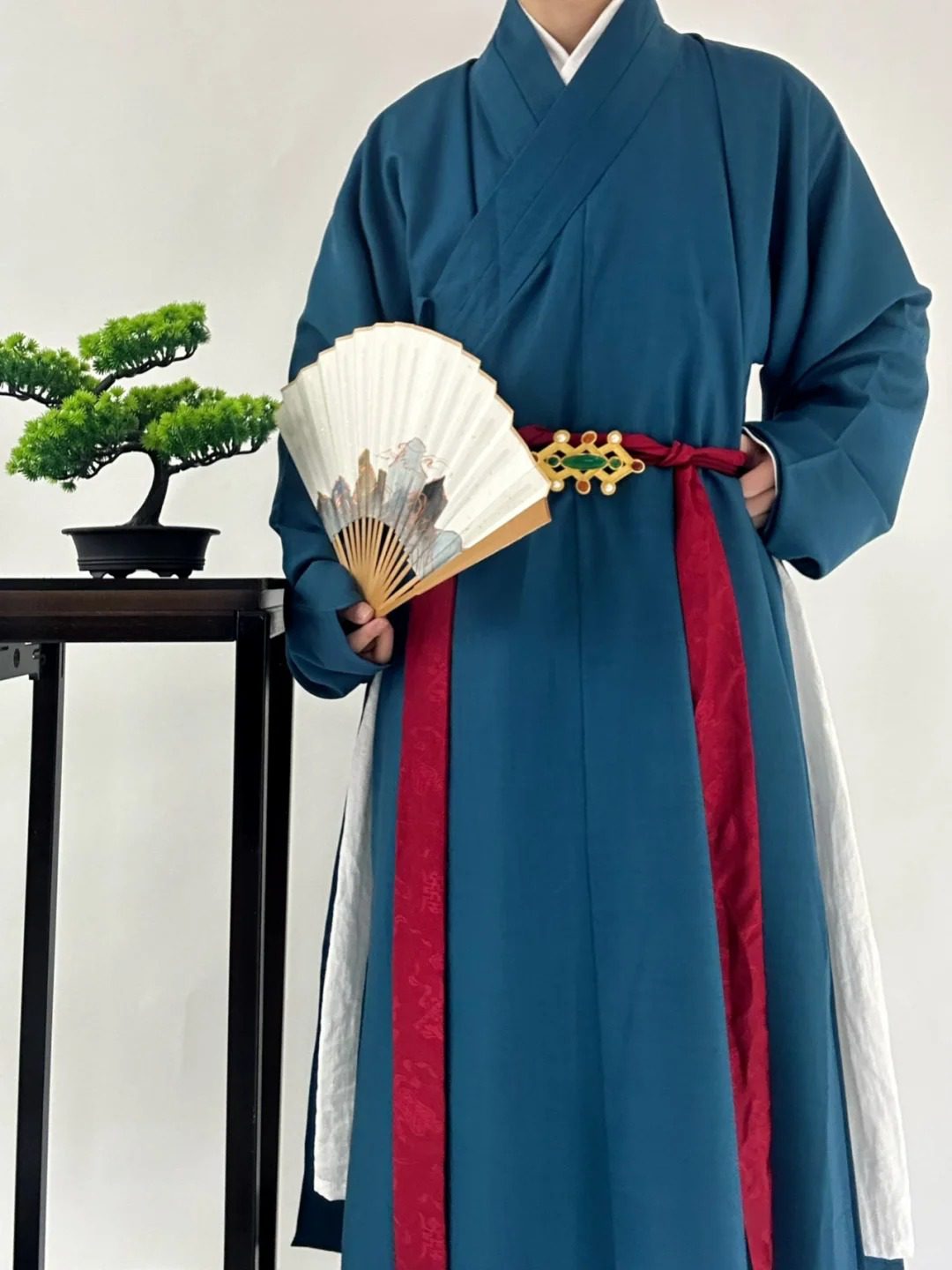
Women’s Apparel
1. The Ma Mian Qun
Without a doubt, the Mamian Skirt is one of the most representative Ming Dynasty women’s clothing. The front and back of the skirt are flat, with pleats on the sides. As the wearer walks, the pleats will gently sway, creating a charming visual effect. The fabrics of the Mamian Skirt are varied, from luxurious silk to affordable cotton, allowing women of all classes to appreciate its beauty.
The patterns of the Mamian Skirt are also varied, ranging from simple geometric patterns to delicate floral patterns. You can find a variety of products inspired by the Mamian Skirt on our website. This skirt is a prime example of the style and characteristics of the Ming Dynasty Hanfu.
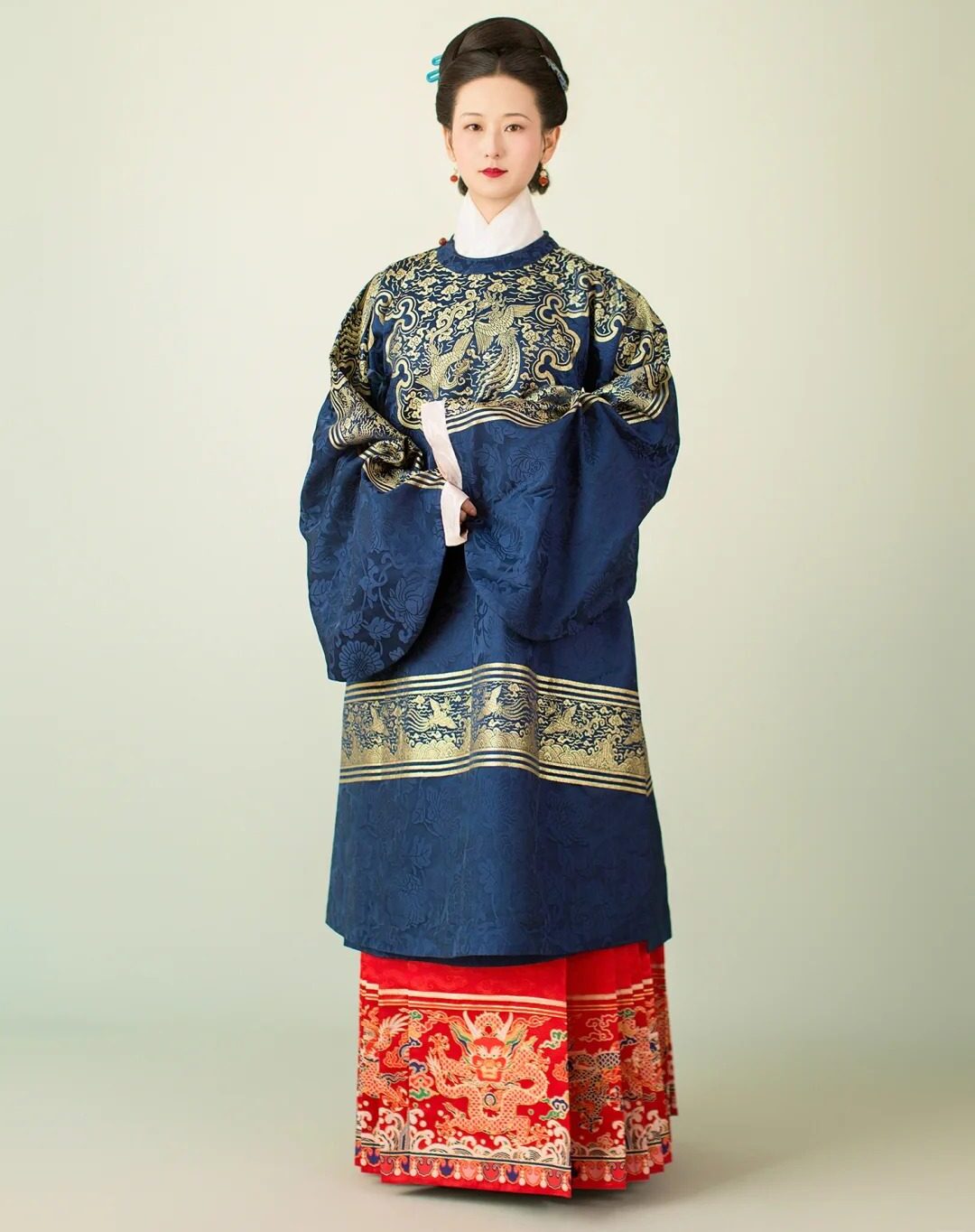
2. The Ao Qun
The Ao Qun was another popular choice for Ming dynasty women. The dui jin ao qun, with its front-opening design, was known for its simplicity and versatility. It could be dressed up or down depending on the occasion. The jiao ling ao qun, on the other hand, had a crossed-collar style that added a touch of modesty and grace.
These ao qun were often paired with the Ma Mian Qun, creating a harmonious and elegant ensemble. The colors and fabrics of the ao qun were carefully chosen to complement the skirt, whether it was a bright and vibrant combination for festive occasions or a more subdued palette for everyday wear. Together, they form an important part of Ming-dynasty women’s fashion, highlighting both style and cultural norms.
3. The Xia Pei
The Xia Pei was an essential part of the Ming dynasty female imperial court official’s (命妇) ceremonial dress. It was a long, decorative sash that was worn over the shoulders and hung down to the knees. The Xia Pei was intricately embroidered with auspicious patterns, such as phoenixes, clouds, and peonies, symbolizing good fortune, nobility, and beauty. It was a symbol of status and privilege, and only women of certain ranks were allowed to wear it.
The design and craftsmanship of the Xia Pei were a testament to the high-level embroidery skills of the Ming dynasty, emphasizing the Cultural significance of Ming-dynasty Hanfu in the context of social hierarchy.

The Symbolic Colors of the Ming Dynasty Hanfu
The Reverence for Primary Colors
1. Yellow: The Imperial Color
In the Ming dynasty, yellow was strictly reserved for the imperial family. It was a color that represented the divine right to rule and the supreme authority of the emperor. Any unauthorized use of yellow was considered a serious offense.
The imperial robes were often made of the finest silk, dyed in a rich, golden-yellow hue, and adorned with elaborate dragon patterns. These robes were not only a form of clothing but a symbol of the imperial power and the celestial mandate of the Ming emperors.
You can learn more about the imperial use of colors in Chinese history on the Palace Museum’s official website. This strict color-use regulation showcases the deep cultural significance of the Ming dynasty Hanfu concerning power and status.
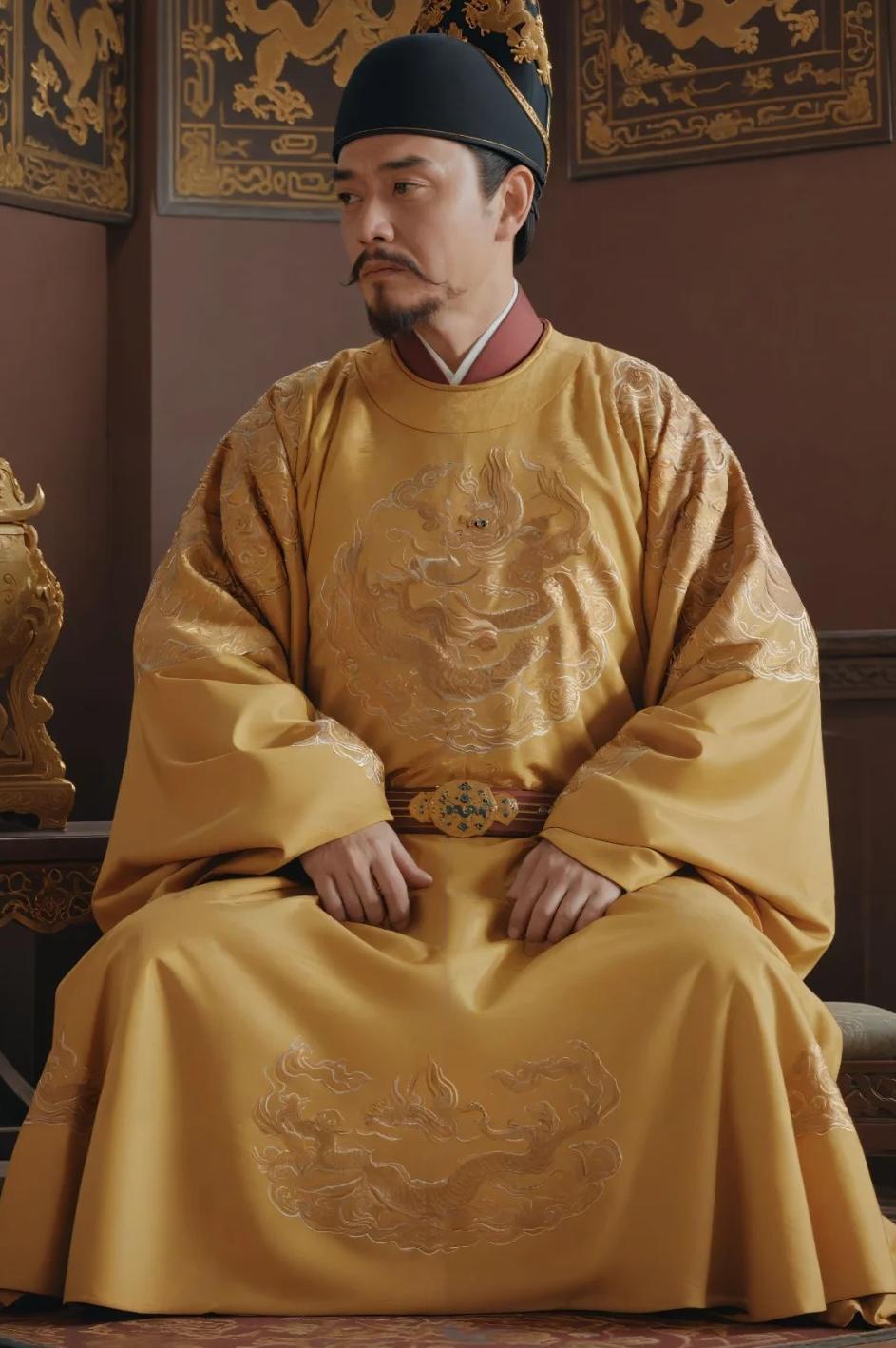
2. Red: The Color of Celebration
Red was a color deeply associated with joy and celebration in the Ming dynasty culture. It was commonly used in wedding dresses, festive costumes, and decorations during important festivals like the Spring Festival. The bright red color was believed to ward off evil spirits and bring good luck. Women’s wedding dresses in the Ming dynasty often featured red as the primary color, with intricate embroidery and beading adding to the opulence of the garment.
Red was also used in children’s clothing during special occasions, symbolizing the hope for a prosperous and happy life. Red, thus, plays a significant role in expressing the cultural values and celebrations within Ming-dynasty Hanfu.

The Allure of Secondary Colors
Blue and Green: The Colors of Nature and Simplicity
Blue and green were popular secondary colors in Ming dynasty clothing, especially among the common people and young women. These colors were inspired by nature, with blue representing the sky and the sea, and green symbolizing the vitality of plants. The use of blue and green in clothing created a fresh, natural, and youthful look.
Women’s everyday dresses often came in soft blue or green hues, sometimes with simple white or light – colored trim. These colors were not only aesthetically pleasing but also reflected the Ming dynasty people’s love for nature and their pursuit of a simple, harmonious life. This use of secondary colors is part of the unique Styles and characteristics of Ming-dynasty Hanfu, showing the connection between fashion and the natural world.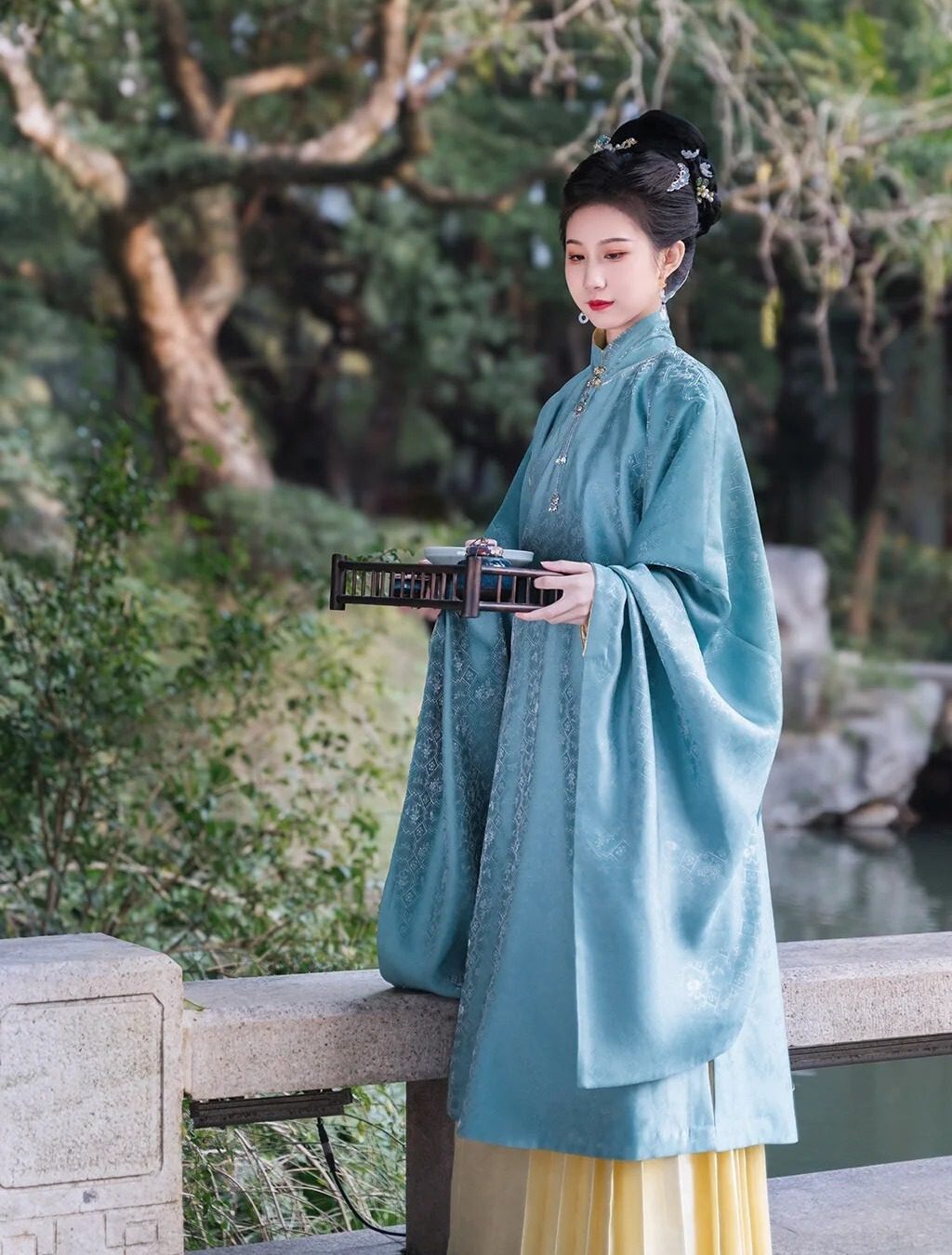
The Rich Symbolism of Patterns in the Ming Dynasty Hanfu
Auspicious Patterns
1. The Power of Symbolism
Patterns on Ming-dynasty clothing were not just for decoration; they were rich in symbolism. The bat, for example, was a common motif because its Chinese pronunciation “fu” was a homophone for “fortune.” When embroidered on clothing, it was a way for people to express their wish for good luck and prosperity. The peach, another popular pattern, represented longevity.
It was often used in clothing for the elderly or on occasions related to birthday celebrations. The peony, known as the “king of flowers,” symbolized wealth and honor. These patterns were carefully crafted using techniques such as embroidery, printing, and weaving, adding a layer of depth and meaning to the clothing. These auspicious patterns are a key aspect of the Cultural significance of Ming-dynasty Hanfu, carrying people’s hopes and dreams.
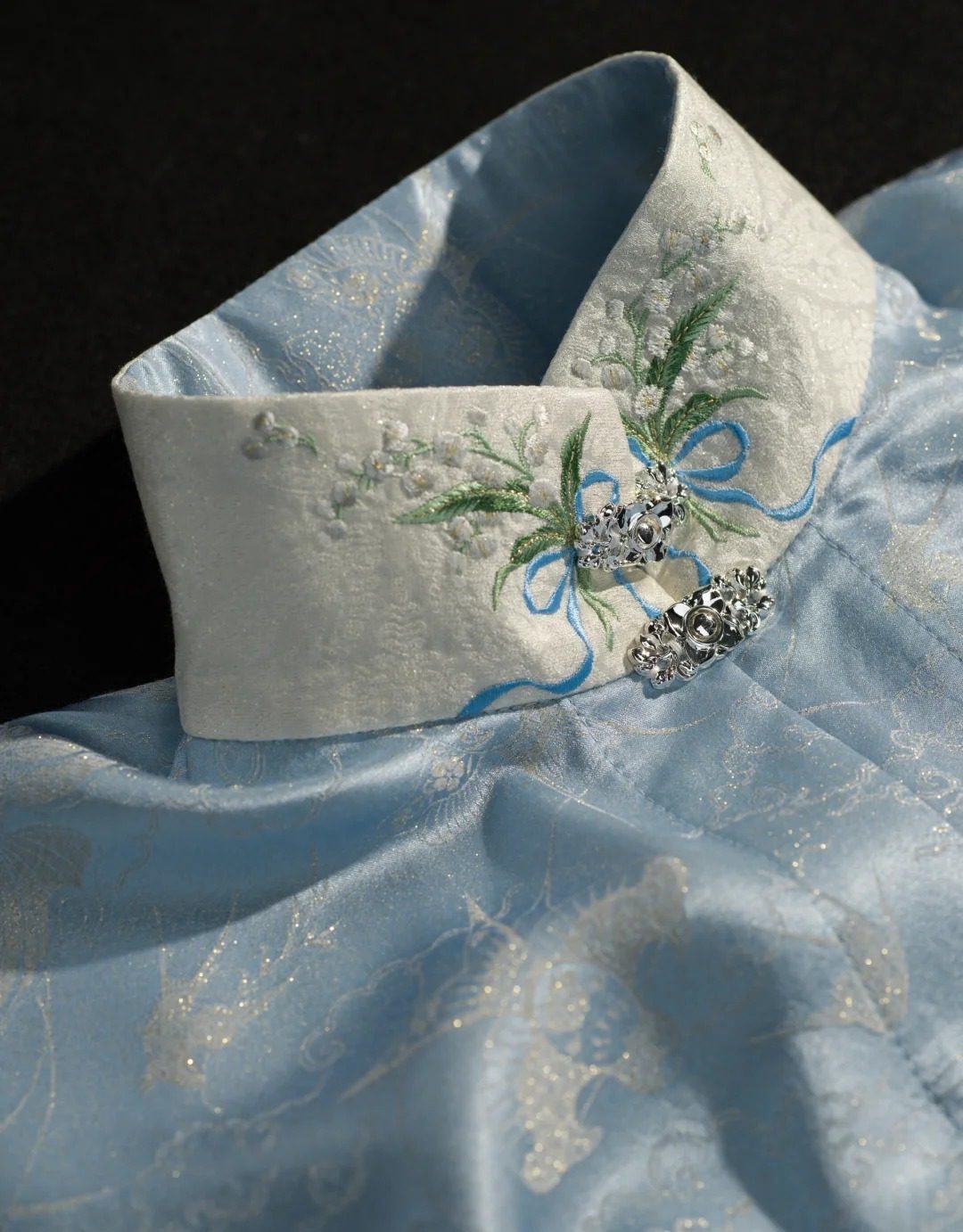
2. Patterns for Different Occasions
The choice of patterns also depended on the occasion. For weddings, patterns like the mandarin ducks, which symbolized love and fidelity, were commonly used. During the Mid-Autumn Festival, moon-related patterns such as rabbits (associated with the moon in Chinese mythology) might adorn the clothing.
These patterns not only made the clothing more visually appealing but also added to the festive atmosphere of the occasion. The adaptation of patterns to different events further emphasizes the Cultural significance of Ming-dynasty Hanfu in the context of traditional Chinese festivals and life events.

Patterns as Markers of Social Status
The Rank-Specific Buzi Patterns
The most prominent example of patterns denoting social status in Ming-dynasty clothing was the buzi patterns on official robes. Civil officials had their robes embroidered with different species of birds, while military officials had various beasts. For instance, the first-rank civil official’s robe was embroidered with a crane, symbolizing longevity and nobility.
The first-rank military official’s robe, on the other hand, had a lion pattern, representing power and courage. These patterns were a clear indication of the wearer’s rank and position within the imperial bureaucracy, and strict regulations governed their use. This system of rank-specific patterns is a crucial part of understanding the Cultural significance of Ming-dynasty Hanfu in re-Ming-dynastyization to the social hierarchy.

Ming Dynasty Hanfu in Modern Fashion
On the Runways
- Global Recognition
In recent years, Ming-dynasty Hanfu elements have made a significant impact on international fashion runways. Renowned fashion designers have drawn inspiration from the unique silhouettes, colors, and patterns of Ming-dynasty clothing. The structured bodices of ao qun, the flowing lines of the Ma Mian Qun, and the elaborate embroidery techniques have all found their way onto modern catwalks.
Designers combine these traditional elements with contemporary fabrics and cuts, creating a fusion of old-world charm and modern style. This trend has not only introduced Ming-dynasty clothing to a global audience but has also elevated the status of Hanfu in the international fashion arena, demonstrating the Modern applications of Ming-dynasty Hanfu in high-end fashion.
2. Innovative Interpretations
Some designers have taken a more avant-garde approach, re reimagining Ming-dynasty clothing in unexpected ways. They might use unconventional materials to recreate the textures of traditional fabrics or play with the proportions of the original designs.
For example, a modern interpretation of the Dao Pao could be made from recycled materials, with a deconstructed silhouette that still retains the essence of the original garment. These innovative interpretations keep the spirit of Ming-dynasty clothing alive while appealing to the younger, fashion-forward generation, further highlighting the Modern applications of Ming-dynasty Hanfu in contemporary design.

In Everyday Fashion
1. The Rise of Hanfu-Inspired Streetwear
Ming Dynasty Hanfu has also influenced everyday fashion, especially in the form of Hanfu-inspired streetwear. Many young people around the world are incorporating elements of Ming Dynasty clothing into their everyday looks.
An easy way to do this is to pair it with a modern-style top and skirt, creating a unique blend of tradition and modern fashion. Some may choose to pair it with accessories inspired by Ming Dynasty jewelry, such as hairpins with phoenix patterns or jade pendants.
This Hanfu-inspired streetwear trend is not only a fashion statement but also a way for people to express their love for traditional Chinese culture. This shows how Ming Dynasty Hanfu has been incorporated into modern everyday fashion, and you can check out more Hanfu outfit inspiration on our website.
2. Cultural Revival Through Fashion
The increasing popularity of Ming – dynasty – inspired fashion in everyday life can be seen as a part of a broader cultural revival movement. By wearing these clothes, people are reconnecting with their cultural roots and promoting the understanding and appreciation of Chinese traditional culture.
It’s a form of cultural expression that goes beyond mere fashion trends, creating a sense of community among those who share a love for Ming-dynasty clothing and its rich heritage. This cultural revival aspect is an important part of the Modern applications of Ming-dynasty Hanfu, bringing history and culture into the modern world.
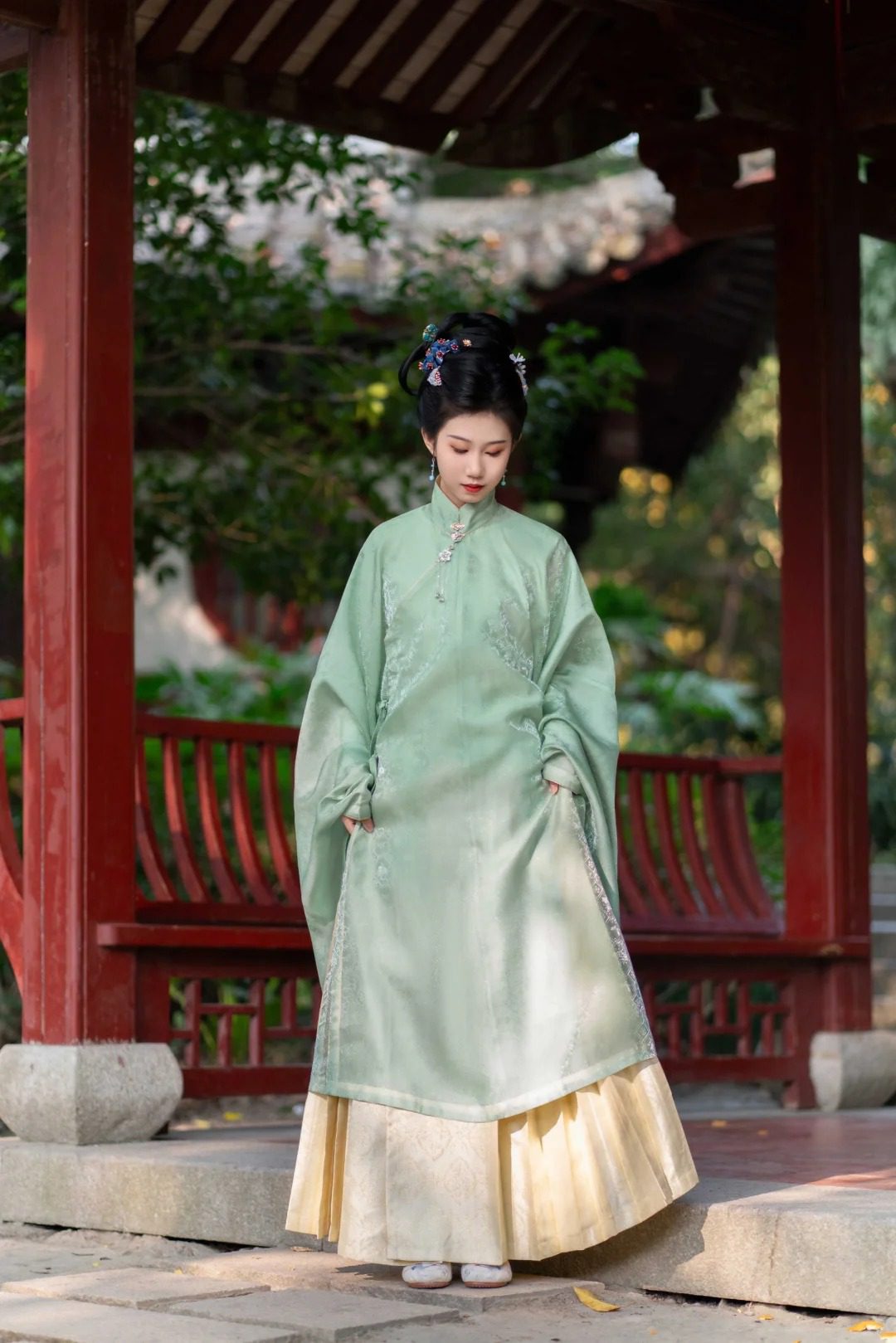
Ming dynasty costumes are a treasure trove of history, culture, and fashion. Their diverse styles, iconic colors, and meaningful patterns provide a wealth of inspiration for fashion lovers and those interested in Chinese history.
As we continue to explore and celebrate the beauty of the Ming dynasty Hanfu, we hope that more people will be attracted by its timeless charm. Whether you are an experienced Hanfu lover or just beginning to explore this world, Hanfu costumes always bring new learning and appreciation. Please visit our blog regularly for more in-depth explorations of Hanfu and its various dynasties.



